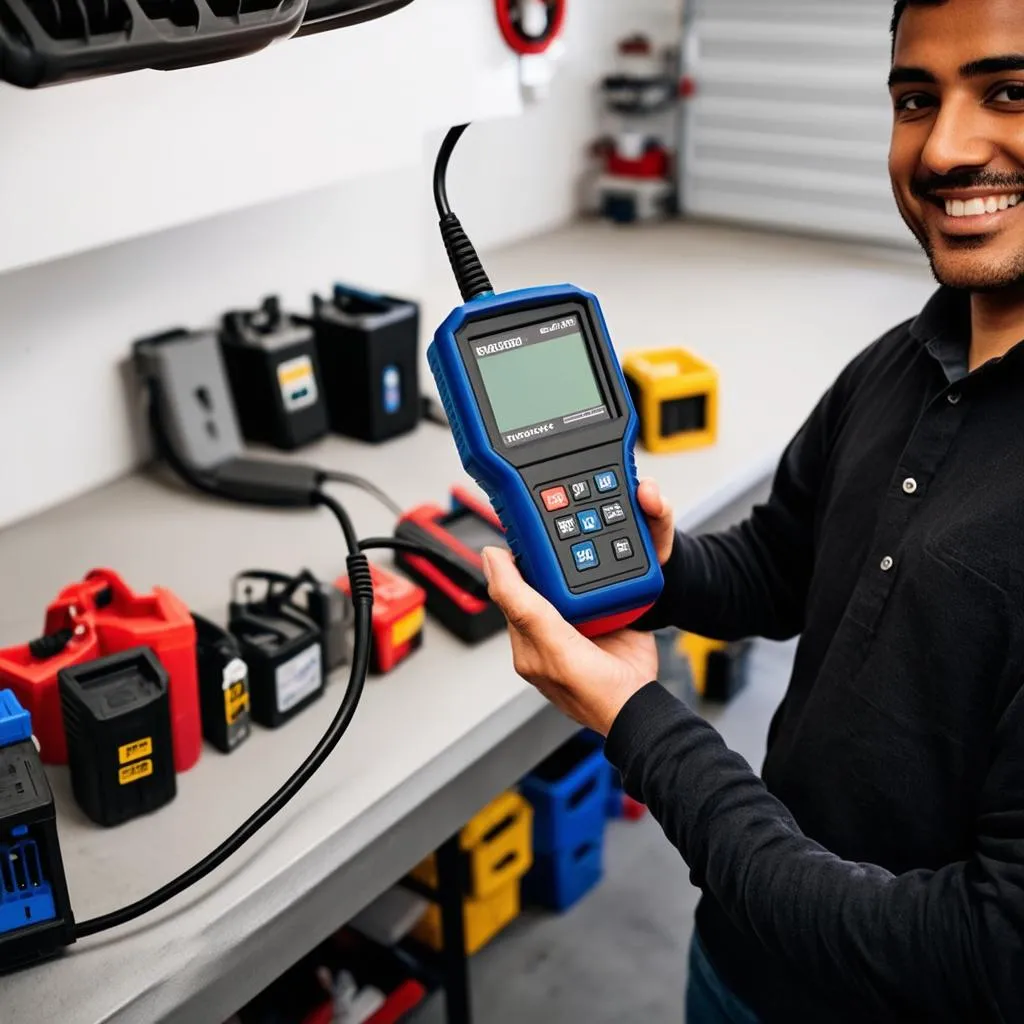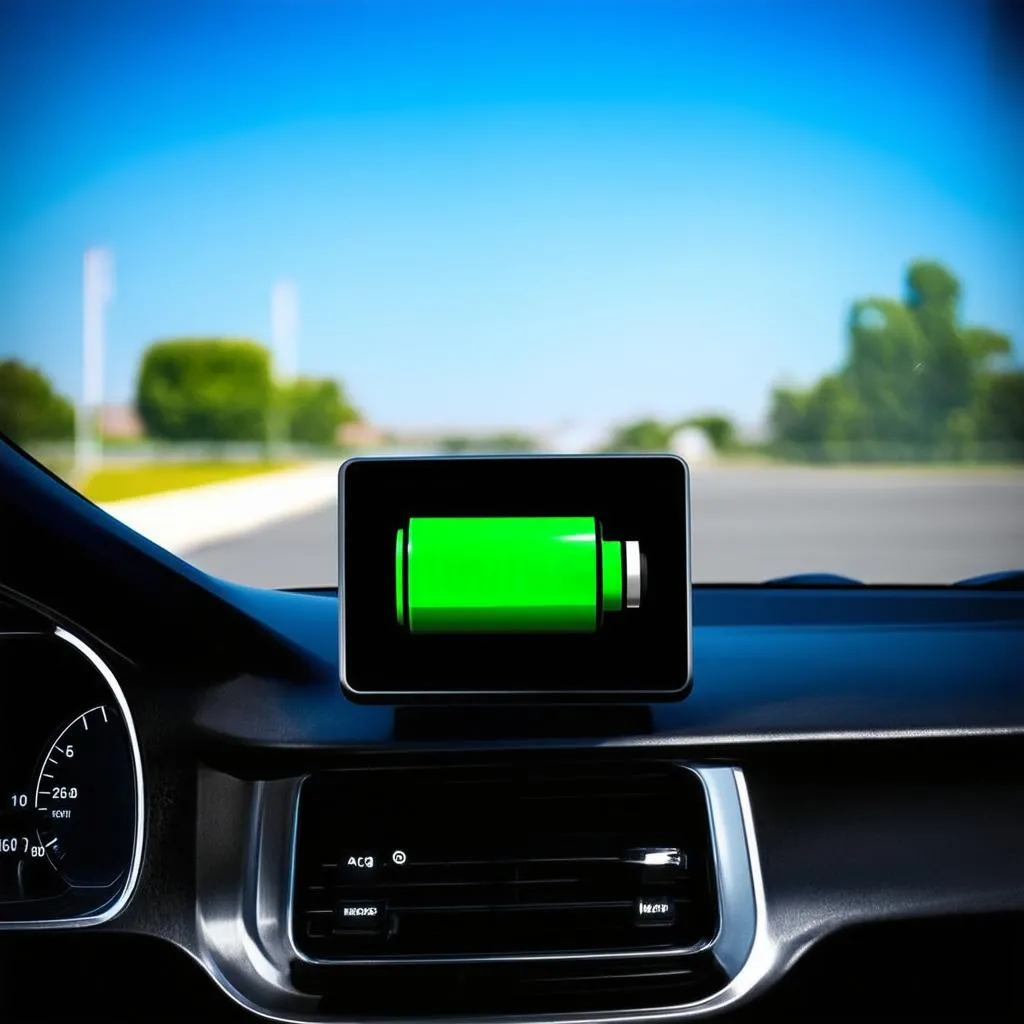Have you ever found yourself stranded with a dead battery? It’s a frustrating experience, especially when you’re in a hurry. While a jump start can get you back on the road, it’s essential to understand the underlying cause of the battery issue. Fortunately, the OBD2 system in your car can be a powerful tool for checking battery voltage and diagnosing potential problems. In this article, we’ll explore how to check battery voltage using your OBD2 scanner, delve into the importance of battery health for your vehicle’s performance, and discuss the steps you can take to maintain your battery’s optimal condition.
Understanding the Importance of Battery Voltage
The battery is the heart of your car’s electrical system, supplying power to the starter, ignition system, lights, and other accessories. A healthy battery voltage is crucial for a smooth and reliable driving experience. Battery voltage is measured in volts (V) and can fluctuate slightly depending on the car’s age, battery type, and ambient temperature.
How to Check Battery Voltage With Obd: A Step-by-Step Guide
Checking battery voltage with an OBD2 scanner is a straightforward process that can be done by anyone with basic mechanical knowledge. Here’s a step-by-step guide:
1. Acquire an OBD2 Scanner:
You’ll need a compatible OBD2 scanner for your vehicle. These devices are readily available online and at auto parts stores.
2. Connect the Scanner:
Locate the OBD2 port on your car, typically under the dashboard or near the steering column. Connect the OBD2 scanner to the port.
3. Select Battery Voltage Reading:
Navigate the scanner’s menu to find the battery voltage reading. This might be labeled “Battery Voltage,” “Battery,” or a similar term.
4. Interpret the Reading:
The battery voltage reading will display on the scanner’s screen. A healthy battery voltage typically falls within the range of 12.4 to 12.8 volts when the engine is off. When the engine is running, the voltage should be between 13.5 to 14.5 volts.
Common Battery Voltage Issues and Their Causes
Low Battery Voltage:
- Weak Battery: An old or faulty battery will have reduced capacity and struggle to hold a charge.
- Parasitic Draw: Electrical components that continue drawing power even when the engine is off can drain the battery over time.
- Corrosion or Loose Connections: Corrosion on battery terminals or loose connections can hinder current flow, leading to low voltage.
- Alternator Failure: The alternator is responsible for charging the battery while the engine is running. A faulty alternator will result in insufficient charging, causing low voltage.
High Battery Voltage:
- Overcharging: A faulty voltage regulator in the alternator can lead to overcharging, potentially damaging the battery.
- External Power Source: If an external power source, such as a battery charger, is connected to the vehicle, it can cause a temporary increase in voltage.
Maintaining Optimal Battery Life: Tips and Tricks
Regular Battery Maintenance:
- Check Battery Terminals: Ensure that battery terminals are clean and free of corrosion. Use a battery terminal cleaner and a wire brush to remove any corrosion buildup.
- Check Battery Water Levels: If you have a lead-acid battery, check the water levels periodically. Add distilled water as needed to maintain the proper level.
- Avoid Deep Discharges: Avoid completely draining the battery. A deep discharge can shorten the lifespan of the battery.
- Consider a Battery Tender: A battery tender is a device that can maintain a full charge on your battery, even when the car is not in use. This can help extend battery life.
Finding the Right OBD2 Scanner for Your Needs
The selection of OBD2 scanners is vast, with options ranging from basic models to advanced diagnostic tools. Factors to consider include compatibility with your vehicle, the range of features, and price.
 OBD2 scanner selection
OBD2 scanner selection
Spiritual Insights on Battery Voltage
From a spiritual perspective, battery voltage can be seen as a reflection of the vital energy that fuels our life’s journey. Just as a car needs a healthy battery to function properly, we need a strong and vibrant energy to navigate the challenges and joys of life.
 Battery voltage spiritual insight
Battery voltage spiritual insight
FAQs – Frequently Asked Questions
Q1: Can I Check Battery Voltage with a Smartphone App?
A: Yes, there are smartphone apps that can connect to your car’s OBD2 port and provide battery voltage readings. However, the accuracy and reliability of these apps may vary. It’s best to consult the app’s reviews and ratings before relying on them for crucial diagnostic information.
Q2: What Happens if My Battery Voltage Is Too High?
A: A high battery voltage can damage your battery, leading to premature failure. It can also cause issues with other electrical components in your vehicle.
Q3: Is a Battery Tender Worth the Investment?
A: A battery tender is a worthwhile investment, particularly for those who don’t drive their car frequently. It helps ensure that your battery stays fully charged, preventing premature wear and tear.
Related Articles
Conclusion
Checking battery voltage with an OBD2 scanner is a simple yet effective way to monitor your battery’s health and diagnose potential problems before they escalate. By following these tips and practicing regular maintenance, you can extend your battery’s lifespan and ensure a smooth and trouble-free driving experience.
 Car battery health check
Car battery health check
If you have any questions or need further assistance, don’t hesitate to contact us via Whatsapp: +84767531508. We have a team of expert auto technicians available 24/7 to help you keep your car running smoothly.